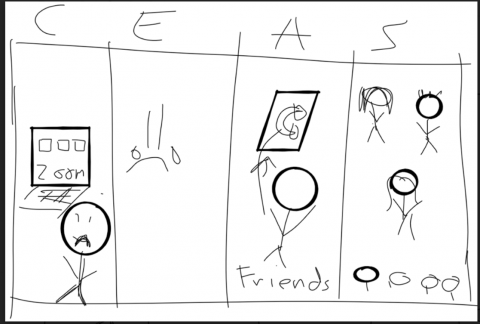Classroom activity – How do you feel about change?
Ask students, how do you feel about change?
Do we all experience change and uncertainty in the same way? Elicit discussion about age, culture, traditions around discussing change and uncertainty etc.
Transition – ending and starting school – are periods of change, which can be really hard. This activity will help you think about, talk about, and understand your feelings about change.
Think-pair-share
Have students get into pairs. Where possible, try to encourage students from different language/cultural backgrounds to work together, to learn about and reflect on change.
This activity could also be adapted.
Tell students you will be working in small groups to build a "change chart".
This chart can allow students to reflect on their own experiences of change, and the feelings that are associated with change.
Change charts allows for exploration of significant changes in our lives, including a description of the change, the emotions that we experienced, the actions we took to cope, and the support they accessed during the time of transition.
Change charts should include the following columns:
- change
- emotions
- actions
- support
Students may wish to adapt chart depending on their own needs and interests.
Reflect
Now, ask students to reflect on an example of change from their own lives. This may be moving house, changing schools, making new friends, travelling, the COVID-19 pandemic, etc.
Ask students to fill in the change chart. Students may use written text or visual images, or both to describe their responses to change, as in the example below:

In their pairs, ask students to ask their partner the following questions, then swap.
- What was the change?
- What did you feel?
- When things changed, what did you do?
- Did anyone help you deal with this change? Who was it? What did they do?
Whole class
Ask students what they have learnt about change.
Did students and their partners have the same response to change?
Discuss why differences may occur.
Ask the class for examples of people who can help them deal with change. Who was it? What did they do?
It is important to remind students that there is no right way to respond to change, and what causes one person to feel a negative emotion, may not bother someone else.